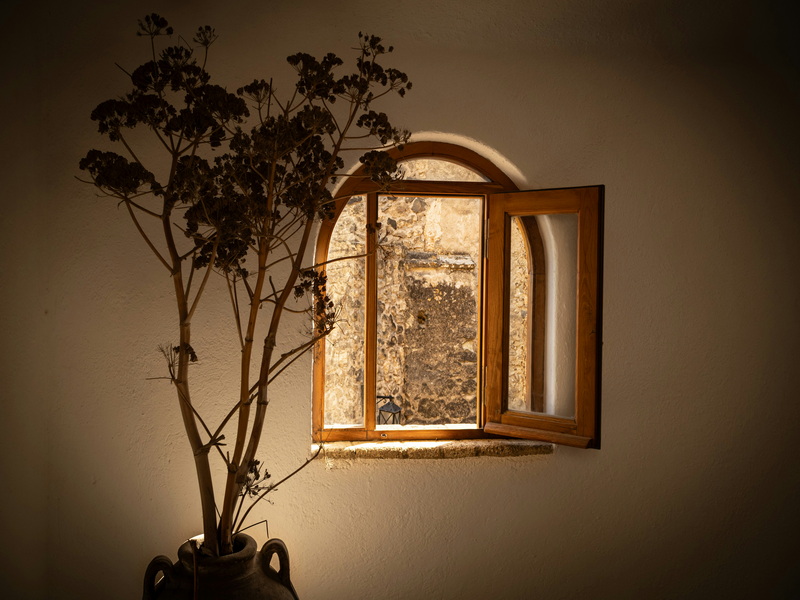English 




Views: 222 Author: Astin Publish Time: 2025-02-22 Origin: Site



Content Menu
● Understanding the Science Behind Aluminum Foil on Windows
● Benefits of Using Aluminum Foil on Windows
● Proper Application Techniques
>> Exterior vs. Interior Application
>> Considering Partial Coverage
● Potential Drawbacks and Considerations
● FAQ
>> 1. How long does aluminum foil last on windows?
>> 2. Can aluminum foil on windows cause glass to break?
>> 3. Is it legal to put aluminum foil on windows?
>> 4. How does aluminum foil on windows compare to commercial window tints?
>> 5. Can aluminum foil on windows help in winter?
In the quest for energy efficiency and home comfort, homeowners often explore various methods to regulate indoor temperatures. One unconventional yet increasingly popular technique is the use of aluminum foil on windows. This article delves into the effectiveness of this method, exploring its benefits, drawbacks, and proper application techniques.

Aluminum foil, a common household item, has properties that make it an effective tool for temperature regulation when applied to windows. The primary mechanism at work is the foil's ability to reflect radiant heat. When sunlight hits a window, it passes through the glass and heats up the interior of the home. By placing aluminum foil on the window, a significant portion of this radiant heat is reflected back outside, reducing the amount of heat that enters the living space[1].
The reflective properties of aluminum foil are due to its highly polished surface, which can reflect up to 95% of radiant heat. This makes it particularly effective in hot climates or during summer months when reducing heat gain is a priority. The foil acts as a barrier, preventing the sun's rays from penetrating the glass and transforming into thermal energy inside the home[2].
One of the most significant advantages of using aluminum foil on windows is improved energy efficiency. By reducing the amount of heat entering the home, the cooling system doesn't have to work as hard to maintain a comfortable temperature. This can lead to lower energy consumption and, consequently, reduced electricity bills. In some cases, homeowners have reported noticeable decreases in their cooling costs after applying aluminum foil to their windows[4].
The reflective properties of aluminum foil can significantly impact indoor temperatures. Rooms that are typically difficult to keep cool due to direct sunlight exposure can become more comfortable with the application of foil. This is particularly beneficial for spaces like attics, sunrooms, or rooms with large windows that face the sun for extended periods[2].
Ultraviolet (UV) rays from the sun can cause damage to furniture, carpets, and other household items over time. Aluminum foil on windows can act as a barrier against these harmful rays, helping to protect your belongings from fading and deterioration. This UV-blocking property can extend the life of your interior furnishings and maintain their appearance for longer[2].
Compared to other window treatments or energy-saving solutions, aluminum foil is an incredibly cost-effective option. A roll of heavy-duty aluminum foil is inexpensive and readily available at most grocery stores. This makes it an attractive solution for those looking to improve their home's energy efficiency without a significant financial investment[4].

To maximize the effectiveness of aluminum foil on windows, proper application is crucial. Here are some key points to consider:
While many people instinctively apply aluminum foil to the interior of their windows, exterior application can be more effective. Placing the foil on the outside of the window prevents heat from even reaching the glass, providing better insulation. However, exterior application can be challenging, especially for upper-story windows, and may not be feasible for all homes[4].
Opt for heavy-duty aluminum foil rather than standard kitchen foil. Thicker foil is more durable and provides better heat reflection. It's also less likely to tear or develop holes, which can reduce its effectiveness[1].
To prevent the foil from falling off or creating air pockets, use a spray adhesive or double-sided tape to secure it to the window. Smooth out any wrinkles or bubbles to create a flat, reflective surface[2].
If complete darkness is not desired, consider covering only a portion of the window with foil. This allows some natural light to enter while still providing heat reduction benefits[4].
While aluminum foil can be an effective solution for heat reduction, there are some potential drawbacks to consider:
The most obvious drawback is the appearance. Windows covered in aluminum foil can be unsightly from both the interior and exterior of the home. This may not be an issue for some homeowners, but it could be a concern in neighborhoods with strict aesthetic guidelines or for those who prioritize curb appeal[4].
Covering windows with aluminum foil significantly reduces the amount of natural light entering the home. This can make interior spaces feel dark and potentially increase reliance on artificial lighting, which could offset some of the energy savings[2].
There's a risk of damage to the window glass, especially if the foil is applied directly to the interior surface. The heat trapped between the foil and the glass can cause thermal stress, potentially leading to cracks or breaks in the window. Using a barrier like cardboard between the foil and the glass can help mitigate this risk[4].
Removing aluminum foil from windows can be challenging, especially if adhesives were used in the application process. There's a risk of leaving residue on the glass, which can be difficult to clean[4].
While aluminum foil can be effective, there are other solutions that may provide similar benefits with fewer drawbacks:
Specialized reflective window films are designed to reduce heat gain while allowing some light transmission. These films are more aesthetically pleasing than aluminum foil and are specifically engineered for long-term use on windows[2].
Heavy, insulating curtains or cellular blinds can provide effective heat reduction without completely blocking out light or altering the appearance of windows from the exterior[1].
Awnings, pergolas, or strategically planted trees can provide shade and reduce heat gain without affecting the windows themselves[1].
Aluminum foil on windows can be a highly effective method for reducing heat gain and improving energy efficiency in homes. Its reflective properties make it an excellent barrier against radiant heat, potentially leading to lower cooling costs and more comfortable indoor temperatures. However, the aesthetic drawbacks and potential risks to windows should be carefully considered.
For those seeking a temporary or low-cost solution, aluminum foil can be an excellent choice, particularly in extreme heat situations or for rooms that are difficult to cool. However, for a long-term solution that balances effectiveness with aesthetics, alternatives like reflective window films or thermal curtains may be more suitable.
Ultimately, the decision to use aluminum foil on windows should be based on individual circumstances, including climate, budget, and personal preferences. When properly applied, it can be a surprisingly effective tool in the quest for a more energy-efficient home.

Aluminum foil can last several months to a year when properly applied to windows. However, its longevity depends on factors such as weather conditions, quality of application, and whether it's applied to the interior or exterior of the window. Regular inspection and replacement as needed will ensure continued effectiveness[1].
While rare, there is a potential risk of glass breakage, especially if the foil is applied directly to the interior surface of the window. The heat trapped between the foil and glass can cause thermal stress. To minimize this risk, consider applying the foil to the exterior or using a barrier like cardboard between the foil and the glass[4].
The legality of putting aluminum foil on windows varies by location. While it's generally not illegal, some homeowners' associations or local ordinances may have restrictions on altering the exterior appearance of homes. It's advisable to check local regulations before applying foil to windows, especially if you live in a managed community[2].
Aluminum foil is generally more effective at reflecting heat than most commercial window tints. However, window tints offer better aesthetics, longevity, and often allow some light transmission. Tints are also designed specifically for use on windows, reducing the risk of damage. While foil is a cheaper short-term solution, window tints may be a better long-term investment[2][4].
While aluminum foil is primarily used to reflect heat away in summer, it can also help retain heat in winter when applied to the interior of windows. The reflective surface can bounce back some of the heat radiating from inside the home. However, there are often more effective and aesthetically pleasing methods for winter insulation, such as thermal curtains or window insulation kits[1][2].
[1] https://www.housedigest.com/1360647/aluminum-foil-lining-windows-mistake/
[2] https://www.chaluminium.com/top-8-functions-of-aluminum-foil-on-windows
[3] https://gist.github.com/allenfrostline/c6a18277370311e74899424aabb82297
[4] https://www.tomsguide.com/opinion/i-just-beat-the-heat-with-a-dollar2-roll-of-aluminum-foil-heres-how
[5] https://www.wellcowholesale.com/blog/post/5-innovative-ways-to-use-aluminum-bubble-foil-heat-reflective-insulation-for-energy-efficiency
[6] https://jphe.amegroups.org/article/view/4265/10863
[7] https://www.reddit.com/r/DIY/comments/14xf1nx/would_it_be_bad_if_i_covered_my_window_with/
[8] https://www.reddit.com/r/Austin/comments/14fj1e6/psa_aluminum_foil_in_your_windows_decreases_the/
[9] https://blog.csdn.net/qq_34917728/article/details/125122327
Top Aluminum Furnitures Manufacturers and Suppliers in Czech Republic
Top Aluminum Furnitures Manufacturers and Suppliers in Poland
Top Aluminum Furnitures Manufacturers and Suppliers in Belgium
Top Aluminum Furnitures Manufacturers and Suppliers in Finland
Top Aluminum Furnitures Manufacturers and Suppliers in Denmark
Top Aluminum Furnitures Manufacturers and Suppliers in Greece
Top Aluminum Furnitures Manufacturers and Suppliers in Portugal
Top Aluminum Furnitures Manufacturers and Suppliers in Austria
Top Aluminum Furnitures Manufacturers and Suppliers in Norway
Top Aluminum Furnitures Manufacturers and Suppliers in Sweden
